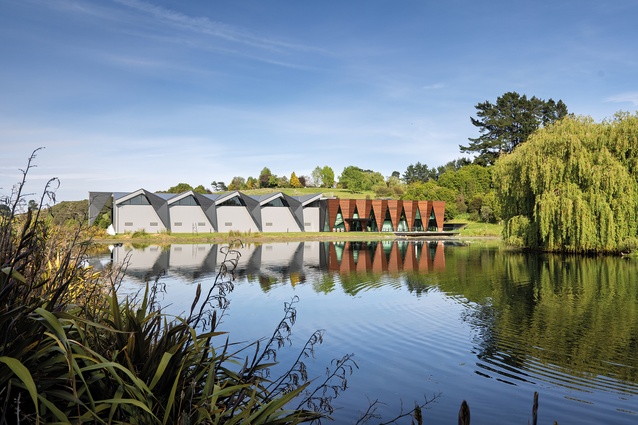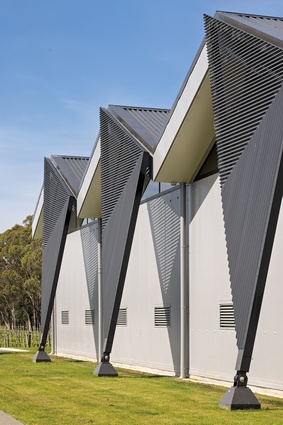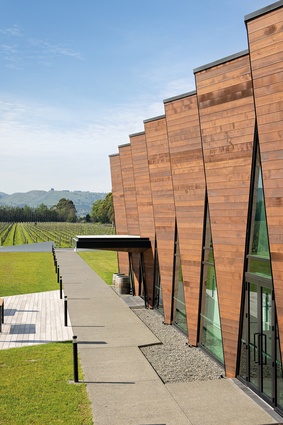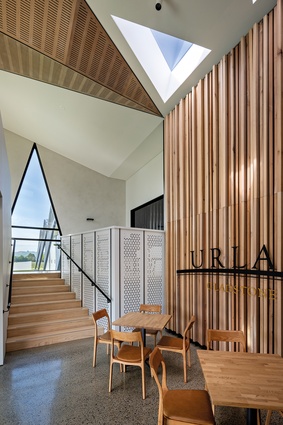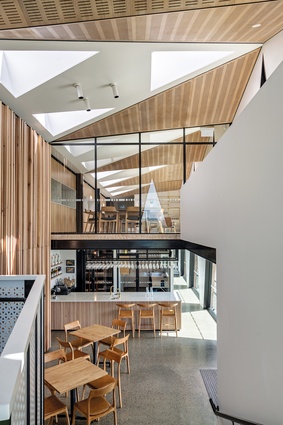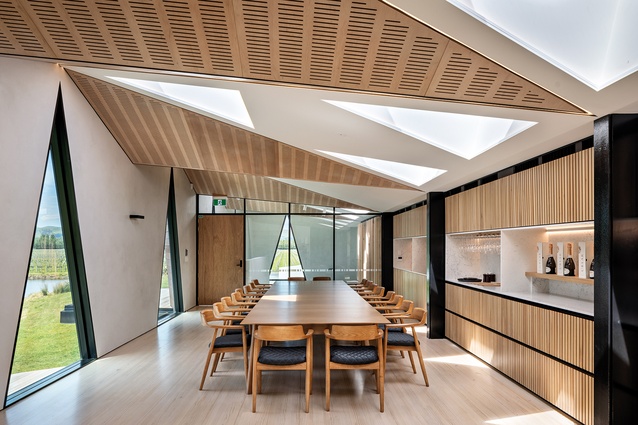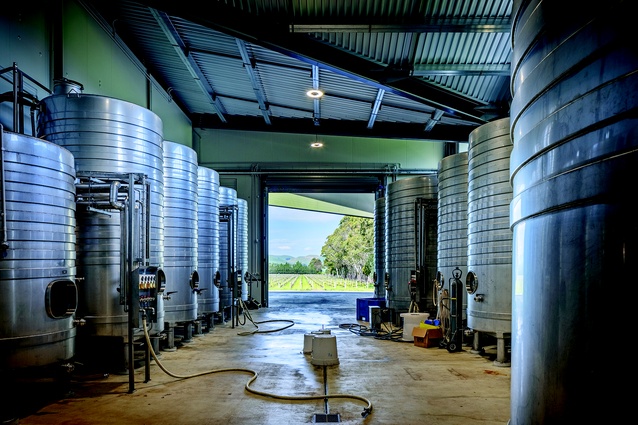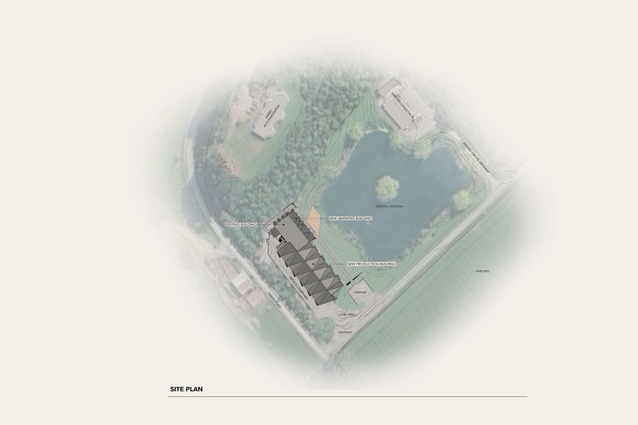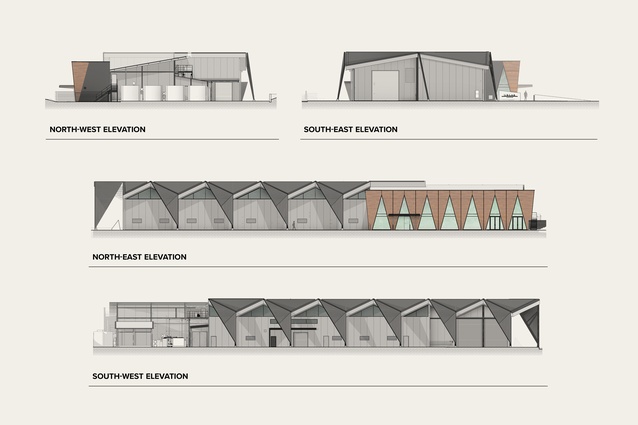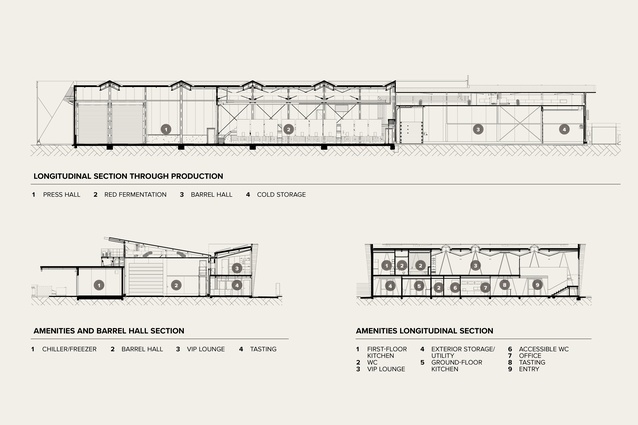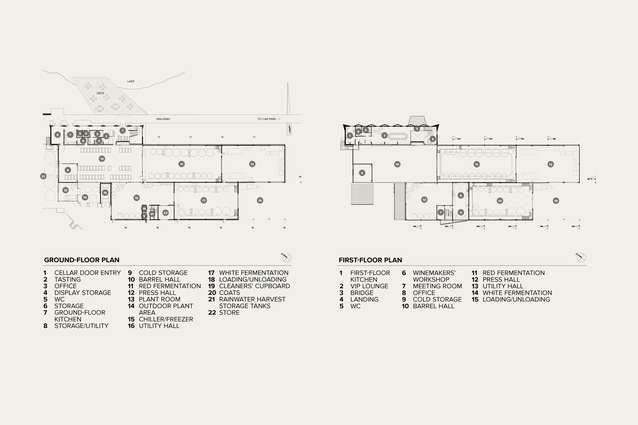Folded like origami
Guy Marriage samples both the architecture and the product offerings at DLA Architects’ Urlar winery redevelopment in the Wairarapa’s vineyard region.
Aotearoa’s wine-producing capabilities have improved greatly over the last 50 years, as has the wine, thank goodness. Our best wines now regularly beat the Old World wines in international competitions — and some French wineries now employ New Zealand winemakers to enable them to catch a bit of the old Kiwi black magic. The grape varieties are now far better suited to the terroir of the earth, the grapes are mechanically harvested, the frosts can generally be averted via cunning technology, and screw tops have fully replaced corks. Oh, how things have changed — and all for the better!
Wineries in this country have varied from the simple classic barn (Clearview’s old tractor shed), to the extravagant Elephant Hill (vast and copper-clad), the elegant Peregrine (one wing, going fast while standing still) and the Aldo Rossi-esque PoMo masterpiece of Craggy Range. Some have cost many thousands, others have been several millions. The difference in scale and extravagance is usually down to a massive influx of cash (typically foreign investment) but, usually, still involves local architects.
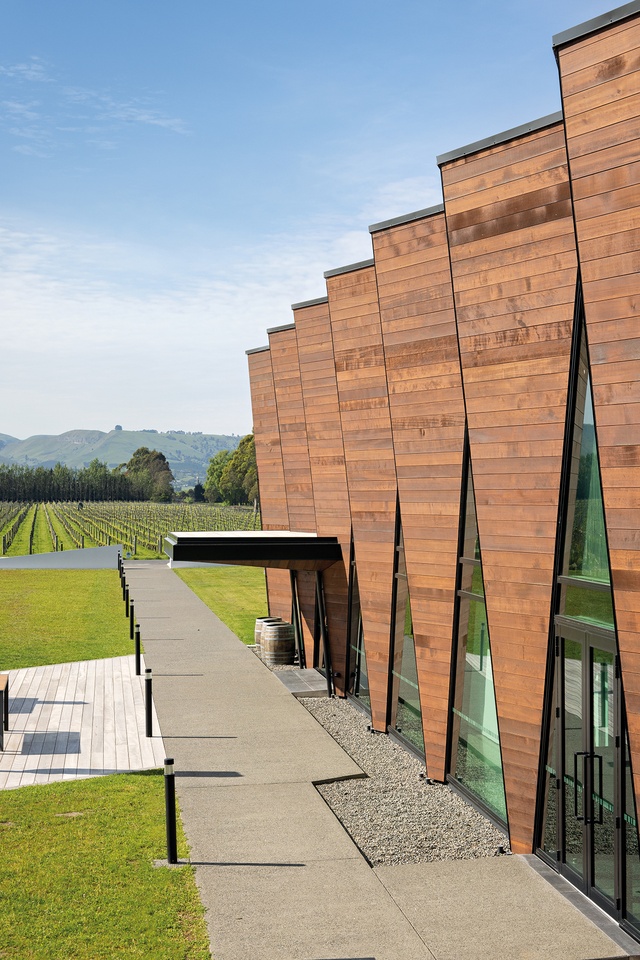
The latest incarnation of foreign largesse is the new Urlar winery crafted by DLA Architects, near Gladstone in the Wairarapa. Like all wineries, at its heart it is just a well-insulated big box, in which to receive the raw grapes and transform them over time into a delicious substance with just a pretentious hint of blackberries or a whiff of gooseberries and apricots. Needless to say, the wine at Urlar is delicious, but mainly exported so you may be unfamiliar with the brand. Ultimately owned by a mysterious Mr Nishi, owner of a revered ancient whisky distillery in Japan, the wine estate in this country is run by the indispensable winemaker Kohei Koyama and his wife, Kuniko.
Urlar (a Scottish Gaelic word meaning ‘of the Earth’) sits at the base of a slight hill, overlooking 31 hectares of organically grown grapes reaching across the valley floor to the Ruamahanga River. And, yes, it really is of the earth, as the Waiohine alluvium soil makes for excellent grape-growing conditions. Urlar has been around for more than 20 years, although the recent construction of the new facility has trebled the capacity of the winery and changed the tempo considerably; this is now a big export business. Urlar has a beautiful man-made lake by the winery, which keeps the ducks and swallows happy with midges and tadpoles to munch on but, also, doubles as a reservoir for spraying mist around in case of frost (the grape-grower’s nightmare).
The winery itself consists primarily of a large rectangular shed, separated into two sides: red grapes vs white, pinot noir vs sauvignon blanc. In winemaking terms, it is a diagram of efficiency — grapes arrive at one end, are loaded into tanks for crushing, and transferred to other tanks for cooling and settling. Eventually, the red wine reaches the stage of being put into barrels and then left for some time, depending on the grape and the quality of the harvest. The many oak barrels holding the pinot like to rest in darkness for a couple of years.
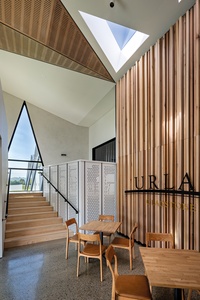
The big insulated box has been folded like origami, the roof and walls crinkled back and forth to create a giant triangulated treasure chest. The folded roof allows regular high-level clerestory windows to bring daylight into the tank room while, externally, triangular perforated metal sunshades connect the roof to the ground and ensure that no strong Wairarapa sunlight breaks through internally. Coolness is maintained by stringent attention from a control room, which is raised up above on a mezzanine floor and can monitor every corner of the winery. A ‘monorail’ suspended above provides the key — the overhead gantry enables the giant stainless-steel tanks to be lifted (when empty) and a giant metal agitator to be lifted up and plunged through the lid to stir up the fermenting grapes.
The barrel room contains the entombed remains of the original, much smaller winery, now eclipsed by the big brother. Amazingly, the winery had to keep producing throughout the build, while massive concrete pours and steel chassis was built all around. A faint smell of wine permeates the facilities, as it should at any good winery but, at this time of the year, harvest is over and the wine is already laid down, gently fermenting and bubbling away, improving year by year. The ground-floor kitchen facilities were incorporated late in the design stage, moving the venue from just offering wine tastings to its current incarnation as a slice of foodie paradise. Scrumptious dishes, such as brie baked in honey and walnuts, or sourdough topped with mushrooms and halloumi, make for good bedfellows with the delicious Urlar Rosé brut on offer. I’m in food and wine heaven. But I digress.
Overall, Urlar is an exercise in rigid triangular geometry: an interesting choice for a business which largely deals in things barrel shaped and bottle driven. The visitor facilities, traditionally known as the ‘cellar door’, are housed in an angular, double-level timber box on the north side, bathed in sunshine by the lake. More origami: the frontage ripples a little, projecting in and out with a row of sculptural timber shields protecting a wall of tall triangular glass panels. Driven at least partially by Mr Nishi and his Japanese love of well-crafted timber geometry, the effect is striking externally, while fresh and sumptuous internally. The whole of this area is lit via a series of triangular skylights above, where the crispness of the triple-sided cavities capturing the blue Wairarapa sky is set off against the darker, more sombre depths of the fermenting barrel room behind.
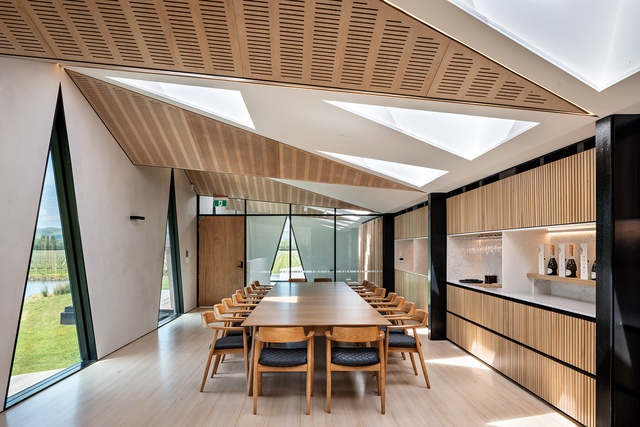
The ambience internally has a high-end corporate feeling, with the triangular motif expressed once more in the walls, the roof and even the panels on the staircase balustrade. These have all been beautifully and impeccably finished by Rigg Zschokke builders. Inside, there is a mixture of timber — giant slabs of pine CLT while, upstairs, a beautiful giant board table made of New Zealand beech looks and feels divine. Keeping it company is a feature wall of gorgeous tōtara, harvested from farmed trees grown locally. Inside, I’m a bit torn by this as, to me, the tōtara is pleading to be let outside to brave the elements — Wairarapa used to be a giant tōtara forest in the days of the moa.
Here, the internal walls are completed in a silky-smooth Japanese plaster finish that simply begs to be stroked, while the timber work on the shelving is as well crafted as is any work by Kengo Kuma. Quality levels are incredibly high and credits really need to go to the whole team involved on this project, with Glenn, Ian and James from DLA, Silvester Clark on the complex structural steelwork, and the mechanical engineering by Jacksons Engineering. Rigg Zschokke has picked up its usual high quality of finish and has excelled on the whole package, already winning accolades at the Master Builders awards.
Overall, therefore, this new winery deserves its place on the list of great Aotearoa wine experiences, for the architecture as much as for the tasty food and gorgeous wine. It is a big step forward by DLA as well and really helps put Urlar firmly on the map as a place to visit.

